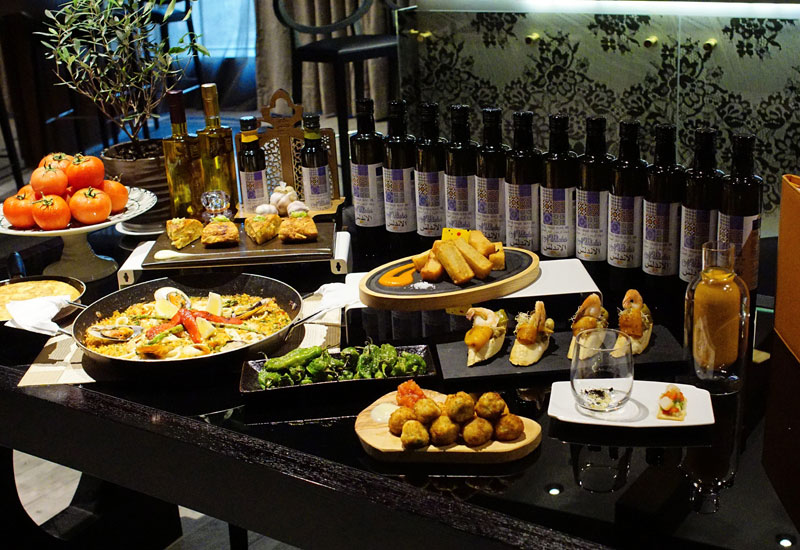Are there any specific challenges to cooking seafood?
It’s a given that seafood needs to be the freshest it can be before the cooking starts. “Methods need to be innovated and adopted, and cooking time is key. Preparation is also essential. Salt levels need to be carefully monitored. Sometimes, chefs even advocate that all seafood be cooked in the same seawater for consistency,” Cedro says.
The battle for tastebuds gets a trifle testy because seafood offers a delicate, neutral canvas that’s quite easy to interfere with. “You have to balance the tastes of different people all the time while also realising that seafood is perhaps the most critical of cuisines because you can’t compromise either on the freshness or the quality. You really have to be very accurate in cooking it,” says Osseiran.
But Clearwater Europe & Middle East marketing director John Ashmore says there’s no harm in introducing a bit of boldness to the flavouring. “Increasingly, we’re seeing the pairing of spicy and bold flavours with a variety of shellfish.

| Advertisement |
On the other hand, Cedro believes freshness and natural taste is what makes seafood worth the experience. “The most valuable seafood is served almost alive, or extremely fresh. That way, we can explore the provenance and oceanographic qualities that make certain seafood more venerable than others.”
Saarti concurs. He says there’s a movement towards simplicity, and doing away with overpowering flavours that could interfere with seafood’s inherent texture and taste. “We want to go back to authenticity, using fresh products, preferably locally sourced. When we cook them, we find a way to preserve the originality of seafood without overwhelming it with a host of other ingredients.”
What must be kept in mind when sourcing seafood?
There are two key concerns. First, seafood must be as fresh as it can possibly get. Second, it needs to be sustainable. “There is growing demand for sustainably-harvested wild seafood yet a finite supply of it. We understand that the only way to continually bring high quality to the marketplace is to ensure the long-term sustainability of the resource. That’s why we believe in sustainable fishing. And we see that our customers are increasingly interested in the traceability and sustainability of the seafood they source,” says Ashmore.
For restaurants and hotels, provenance and fishing methods are playing a key role in the sourcing process. Consumers paying above average prices for seafood delicacies want assurances that their patronage isn’t emptying the oceans.
For establishments, that sets an added burden of due diligence and monitoring. The Crab Tavern’s supplier, for example, uses only small scale partners who fish in season using traditional methods. “There is a growing demand for sustainably-harvested seafood,” says Owen.
It’s not just sustainability that’s a concern. The condition and quality of seafood when it arrives at the kitchen determines the final outcome. Osseiran says that seafood storage and serving is predicated on a delicate balancing act. “There’s a cycle that everyone has to maintain. It starts with a trusted supplier because we’re dealing with very sensitive items. We want to be absolutely sure that the seafood has been treated very well during transit. Once the products are in the kitchen, freshness and stringent temperature conditions need to be maintained. The processing and cooking methods are important. And then the cycle starts all over again. That’s the only way quality can be maintained.”
The burden of sustainability is passed down to suppliers, who are tasked with finding fishermen who operate in environmentally conscientious ways. There is also investment required in R&D, and innovation. “Clearwater has invested heavily in science to ensure we are doing the right thing by the environment,” says Ashmore.









 Search our database of more than 2,700 industry companies
Search our database of more than 2,700 industry companies









